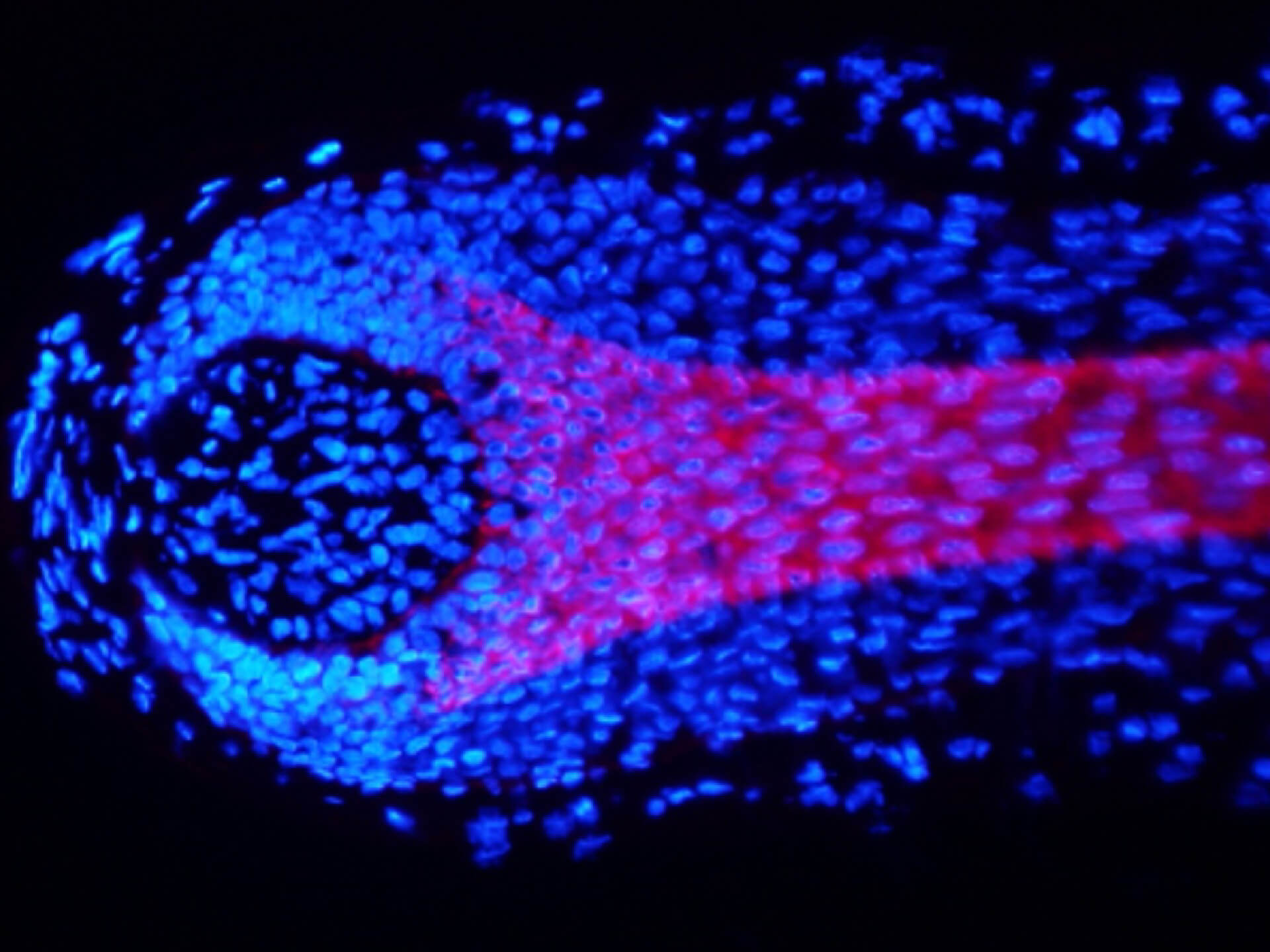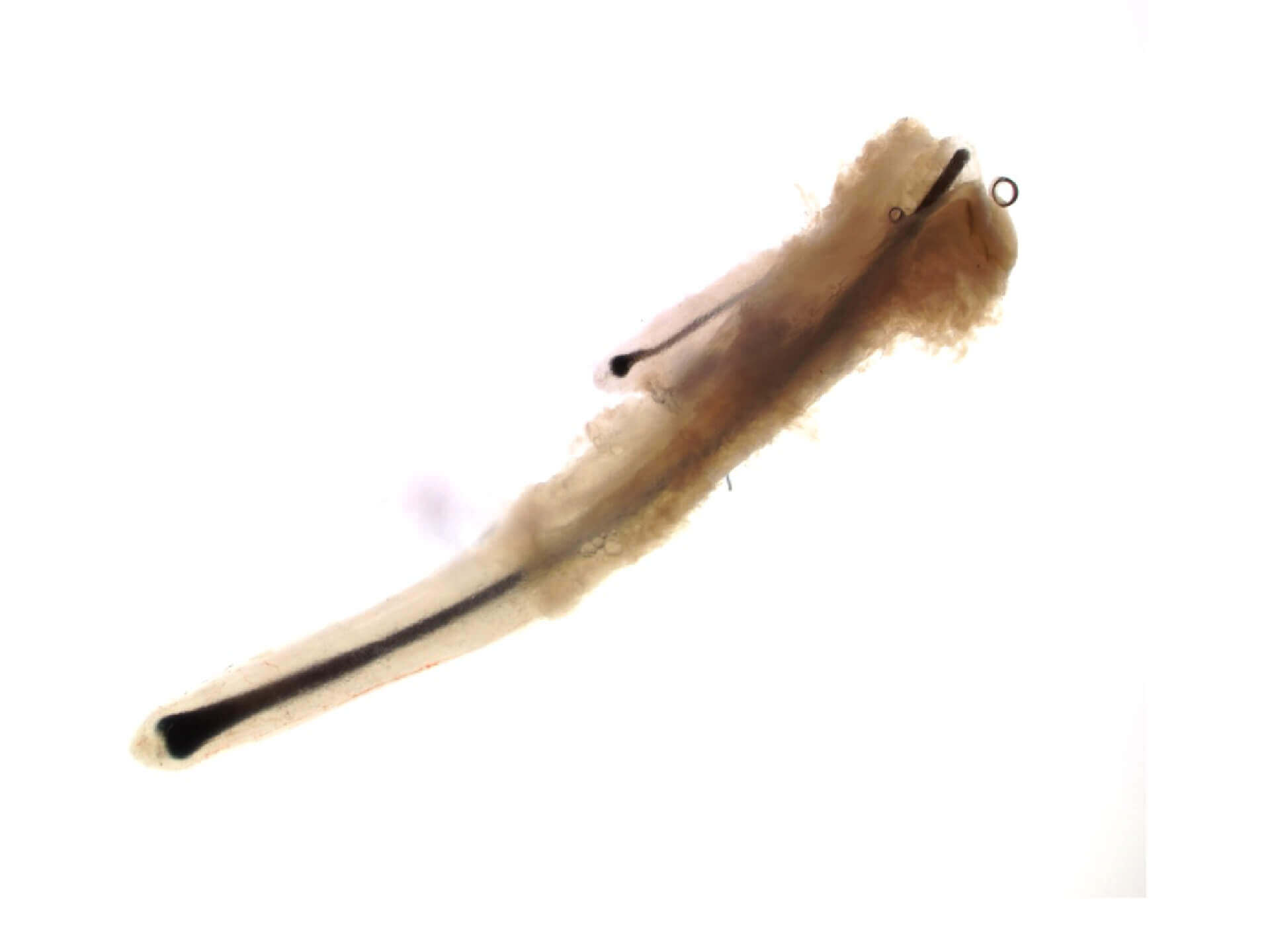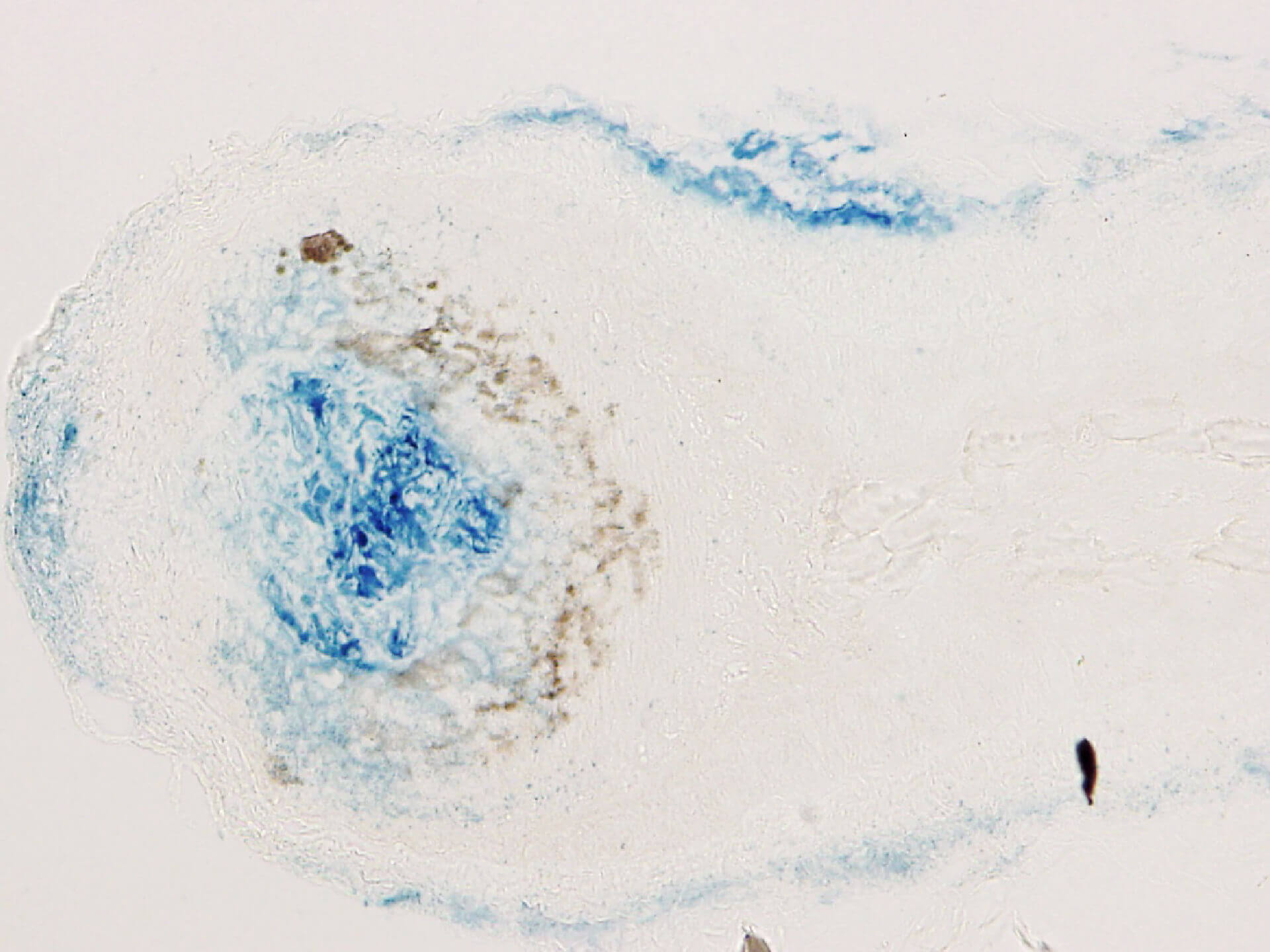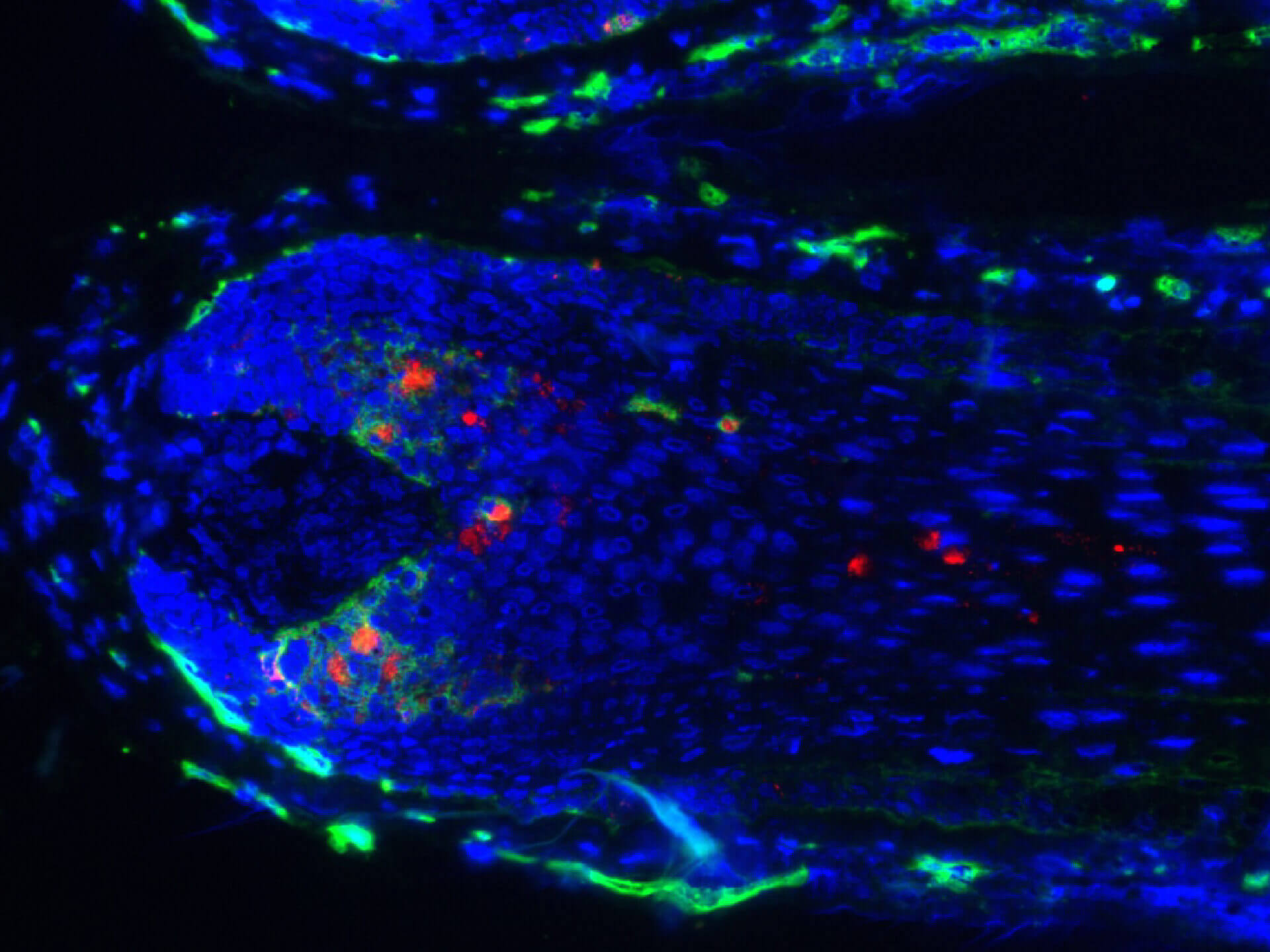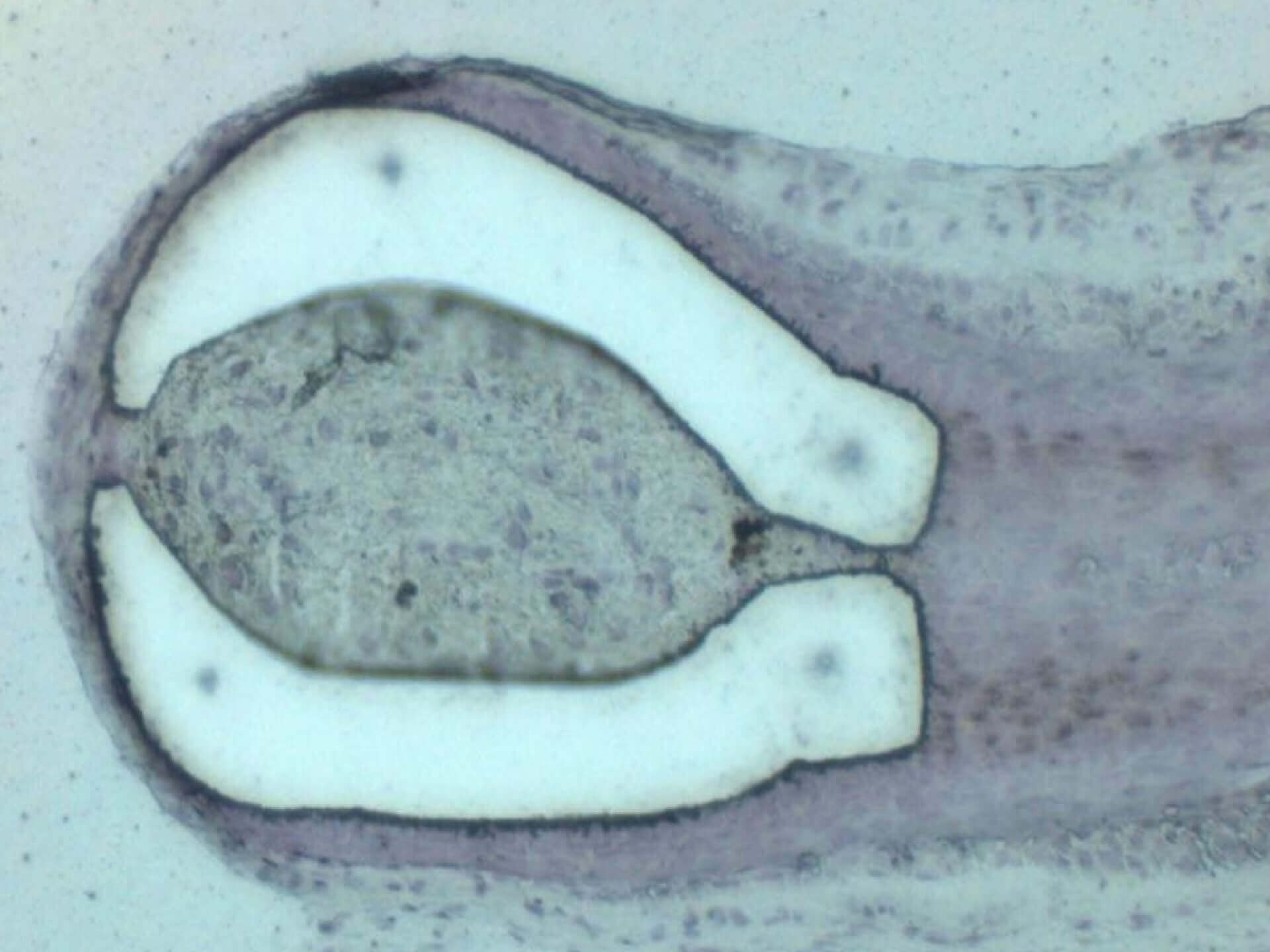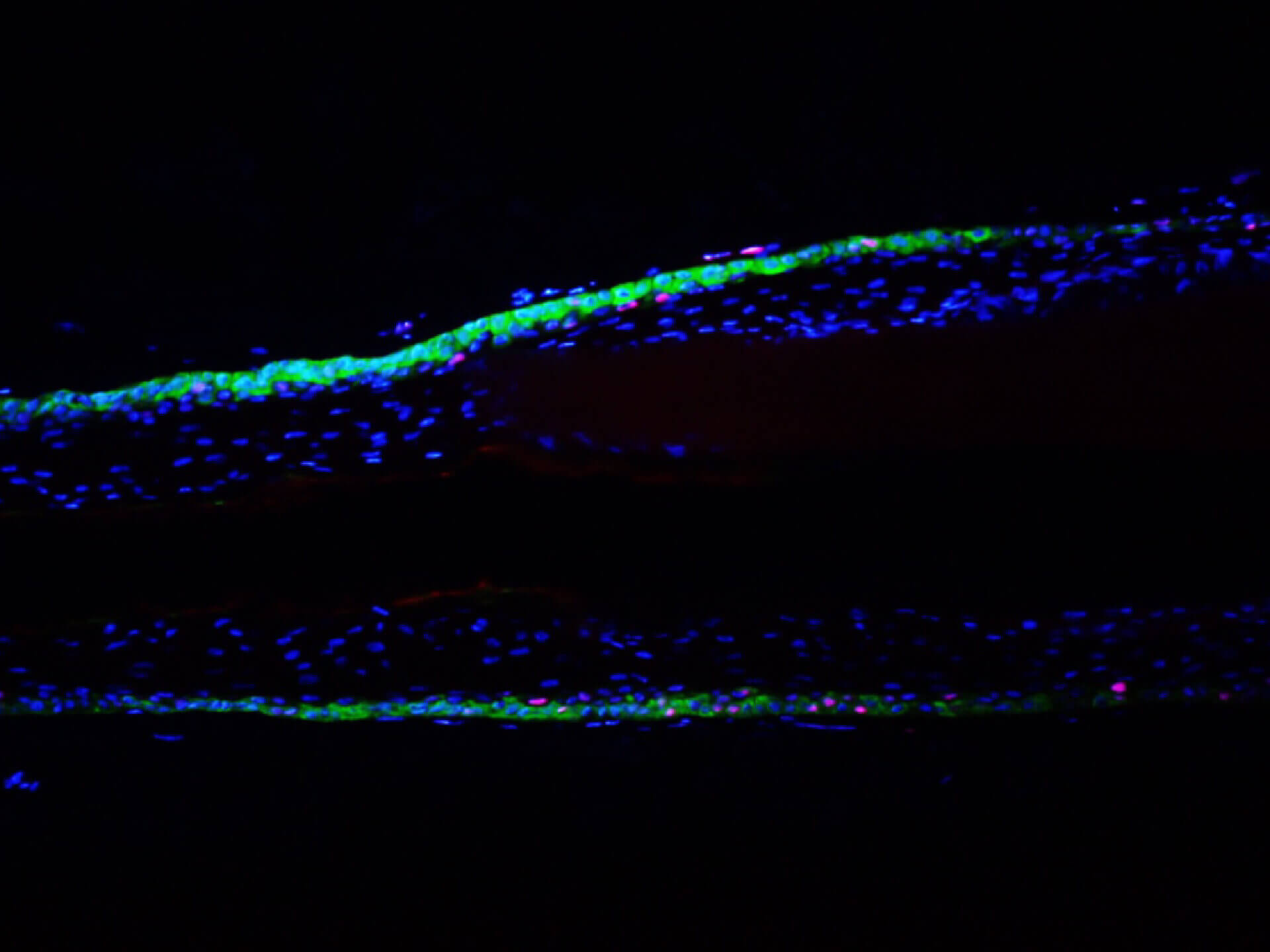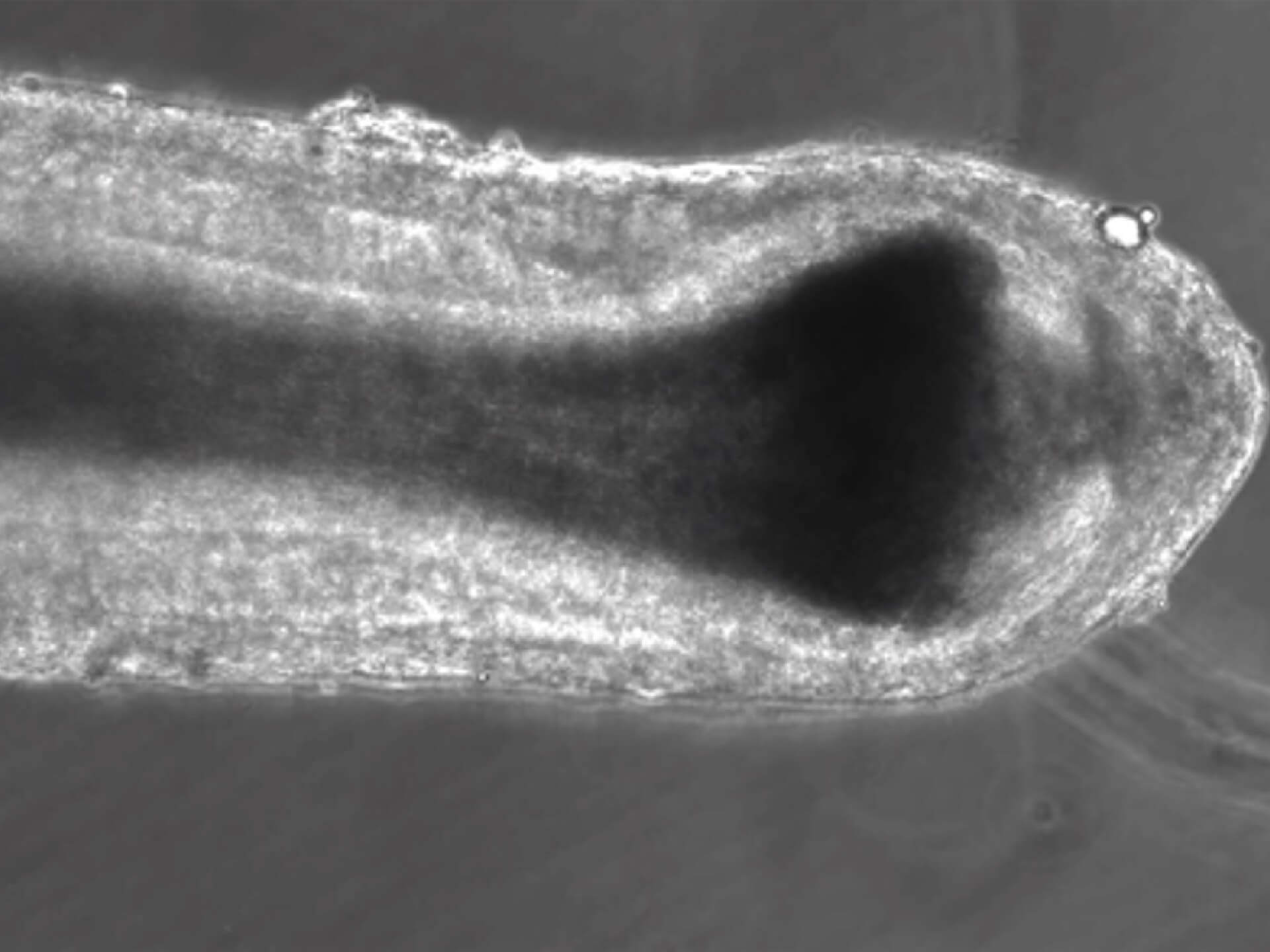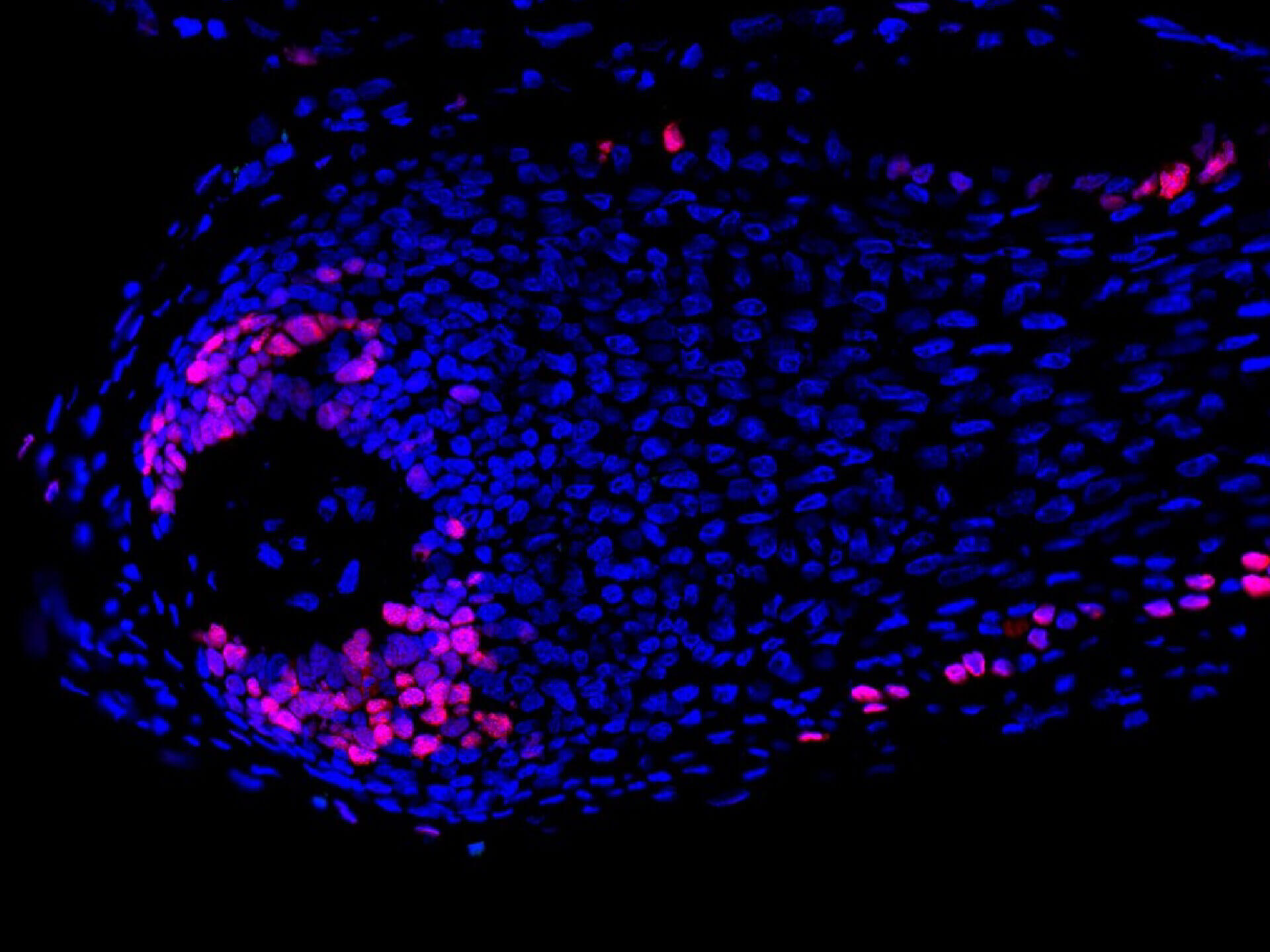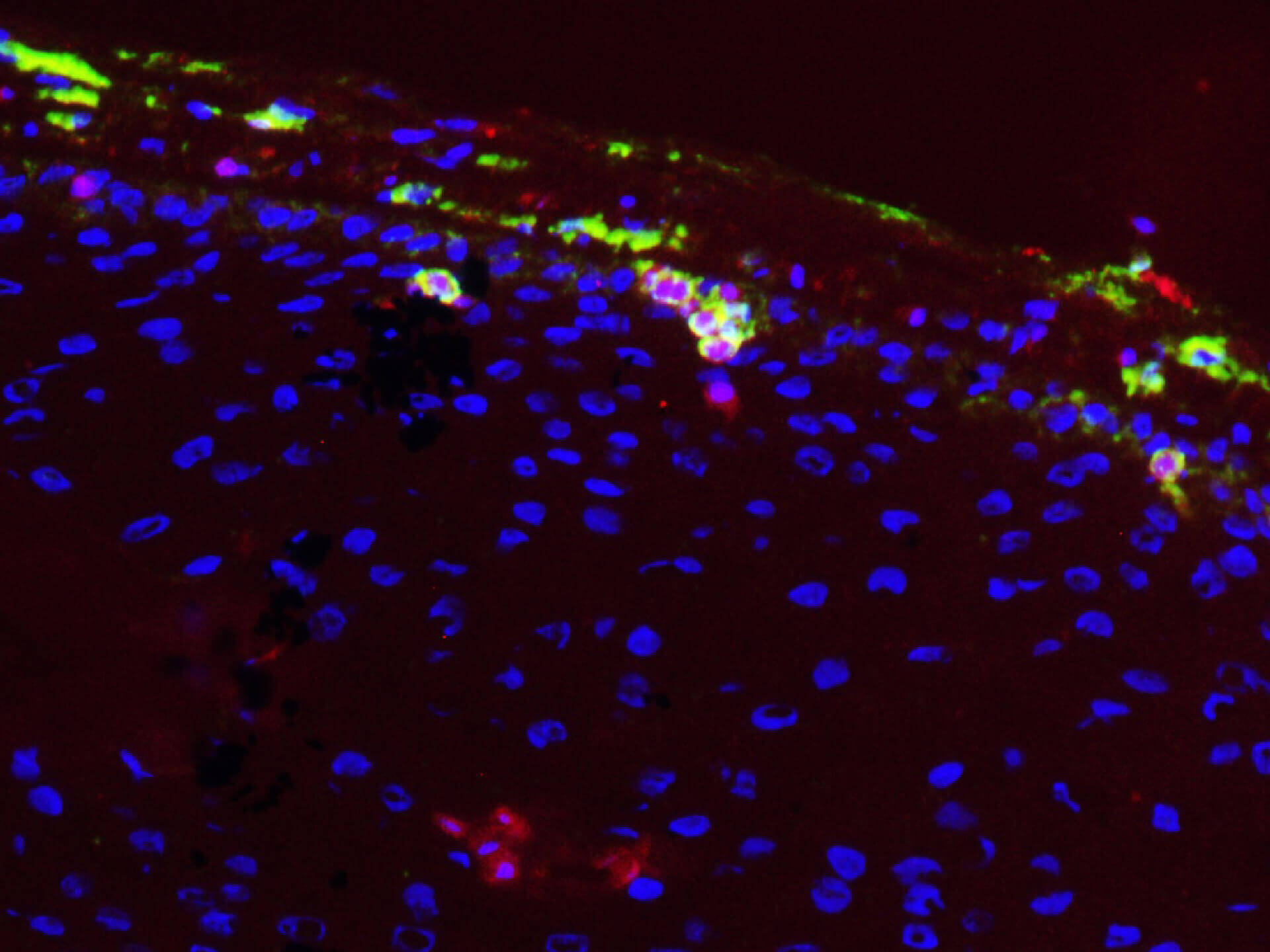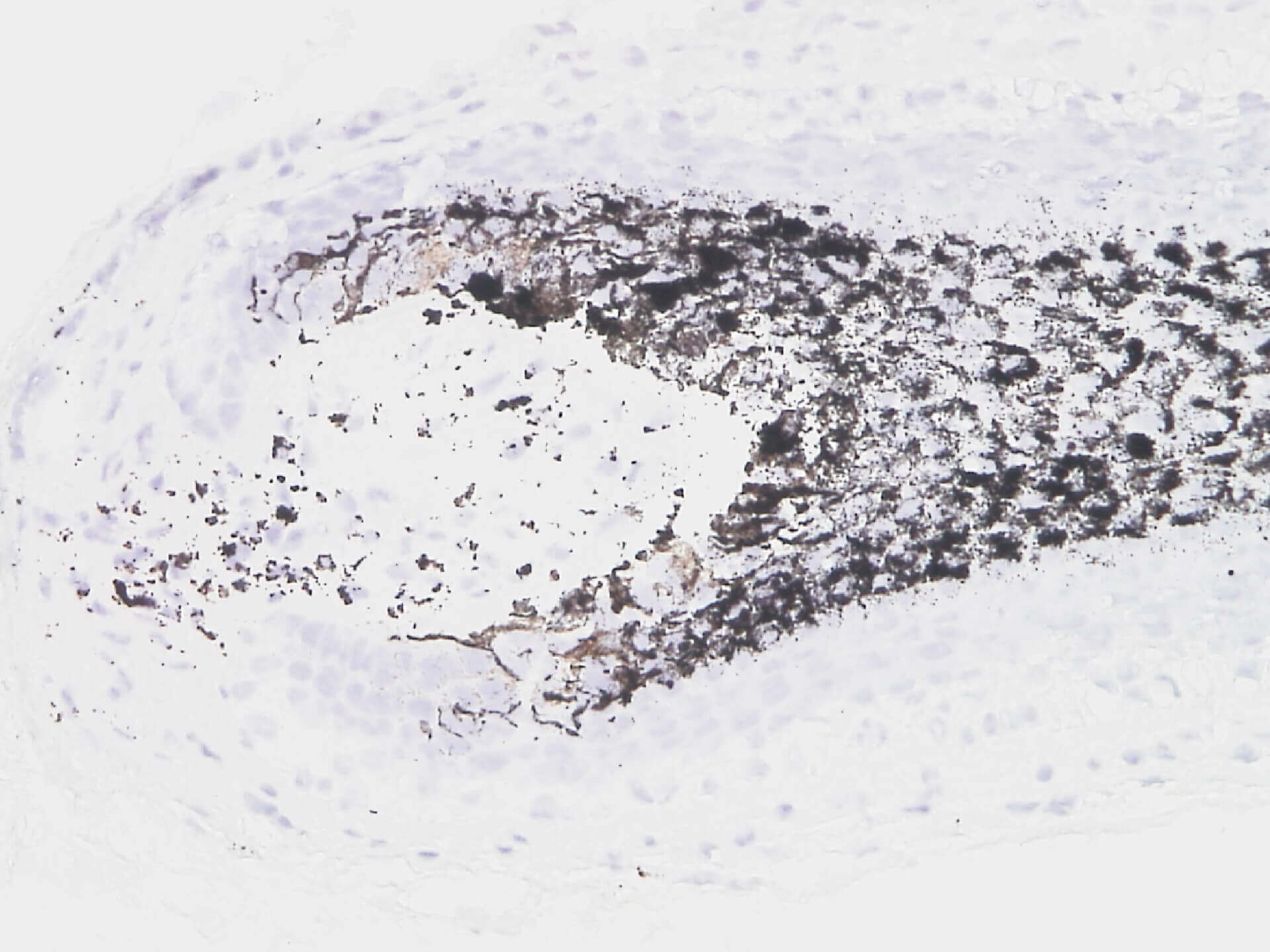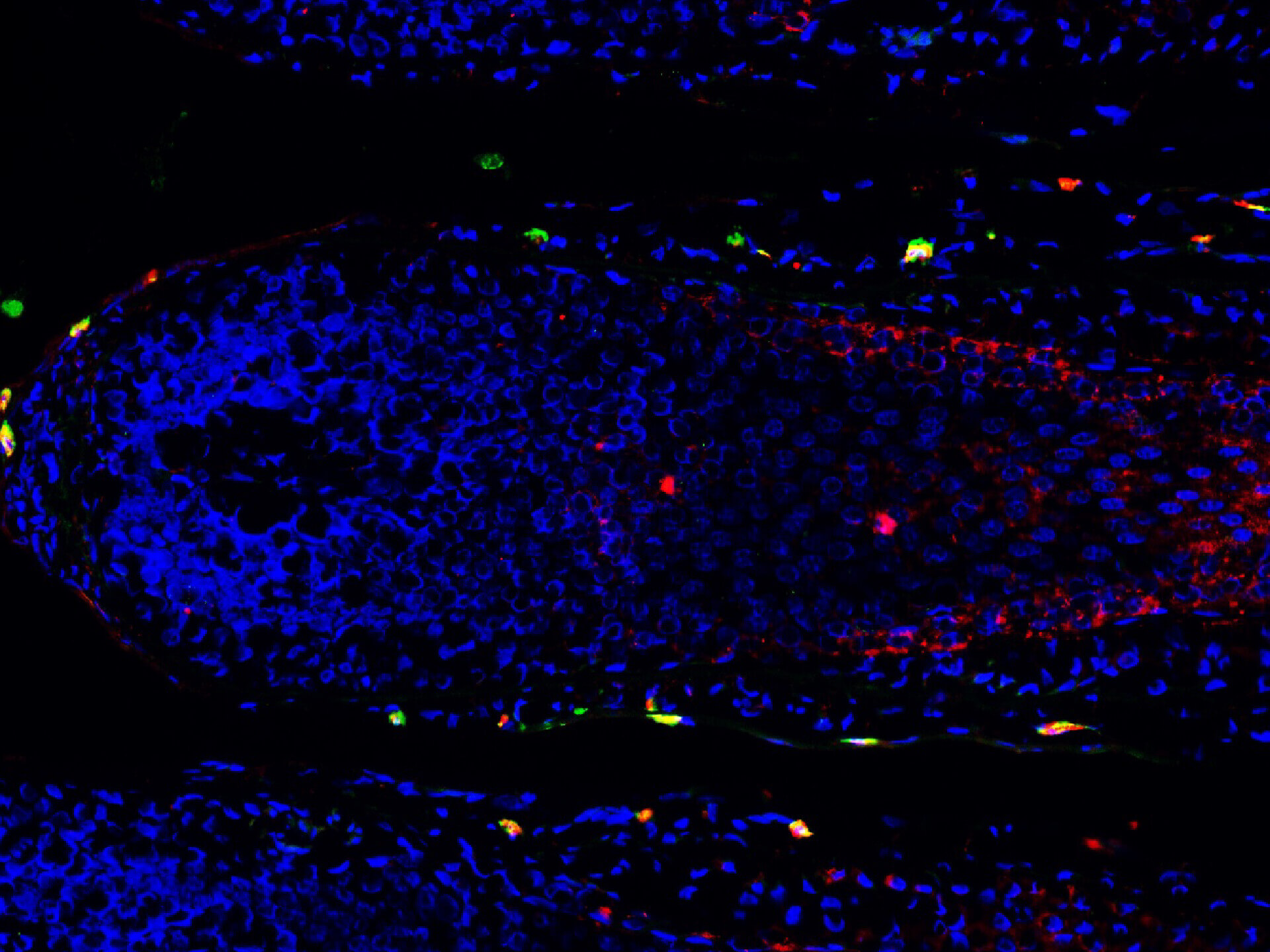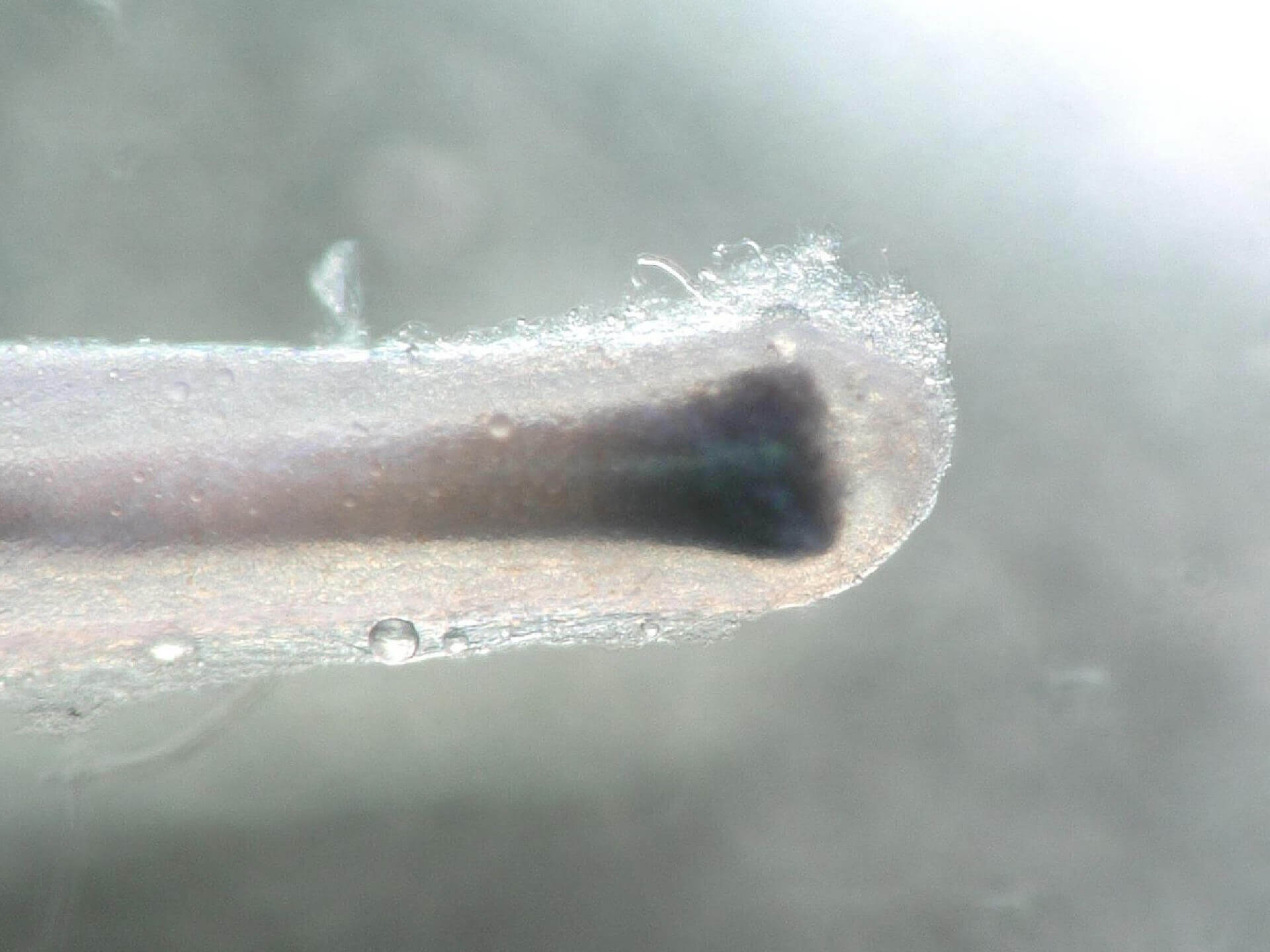Human hair follicle organ culture
We apply different advanced microdissection techniques to isolate hair follicles from human scalp skin or follicular units. This allows us to efficiently culture either microdissected amputated/full-length hair follicle or an entire follicular unit. We perform a careful quality control prior to the culture and treatment to allow the selection of only anagen VI hair follicles. In our assays, hair follicles are cultured ex vivo in a serum-free defined medium.
We have a long-standing expertise (documented in our publications) in performing several analyses for investigating hair follicle responses including hair follicle cytotoxicity, cycle, pigmentation, stem cell activity, immunological phenotype, aging, and many more. Thanks to our novel technique by which we can perform qRT-PCR or RNAseq analyses using very few hair follicles, it is possible now to combine gene expression profiling with in situ evaluation of protein, mRNA expression, and activities (immuno-histomorphometry, in situ hybridization, in situ zymography) in a single experiment, along with in vitro analysis using culture medium (e.g. cytotoxicity and cytokine secretion assays).
We are also eager to share our expertise in revealing how test agents, exogenous and endogenous modulators or cells, environmental stressors, or new targets affect hair follicle responses by performing functional mechanism of action assays, by employing specific agonists, antagonists, neutralizing antibodies, or targeted gene silencing (siRNA).
By using cutting-edge techniques, our assays are ideal also to investigate which hair follicle-associated cell population (hair matrix keratinocytes, outer root sheath keratinocytes, dermal papilla fibroblasts) specifically respond to the treatment.
Selection of currently available hair research and testing models:
If you are interested to learn more about our Models and Solutions for Hair Follicle Research and Testing, please request the replay of our free webinar or download the webinar summary!
Selected publications
Lousada et al., 2023, Horesh et al, 2022, Wikramanayake et al., 2022, O’Sullivan et al., 2022, Smart et al., 2020, Purba et al., 2020, Hundt et al., 2020, Chéret et al., 2020, Fischer et al., 2020, Szabó et al., 2020, Lisztes et al., 2020, Bertolini et al., 2020, Haslam et al., 2020, Hardman et al., 2020, Cheret et al., 2019, Ramot et al.,2019, Lisztes et al., 2019, Hawkshaw et al.,2019, Purba et al., 2019, Lehmann et al., 2019, Alam et al., 2020, Olah et al. 2016, Bertolini et al. 2016, Oh et al. 2016, Purba et al. 2016, Langan et al. 2015, Kloepper et al. 2010
Quick Connect
Get in touch with us for inquiries and more information

